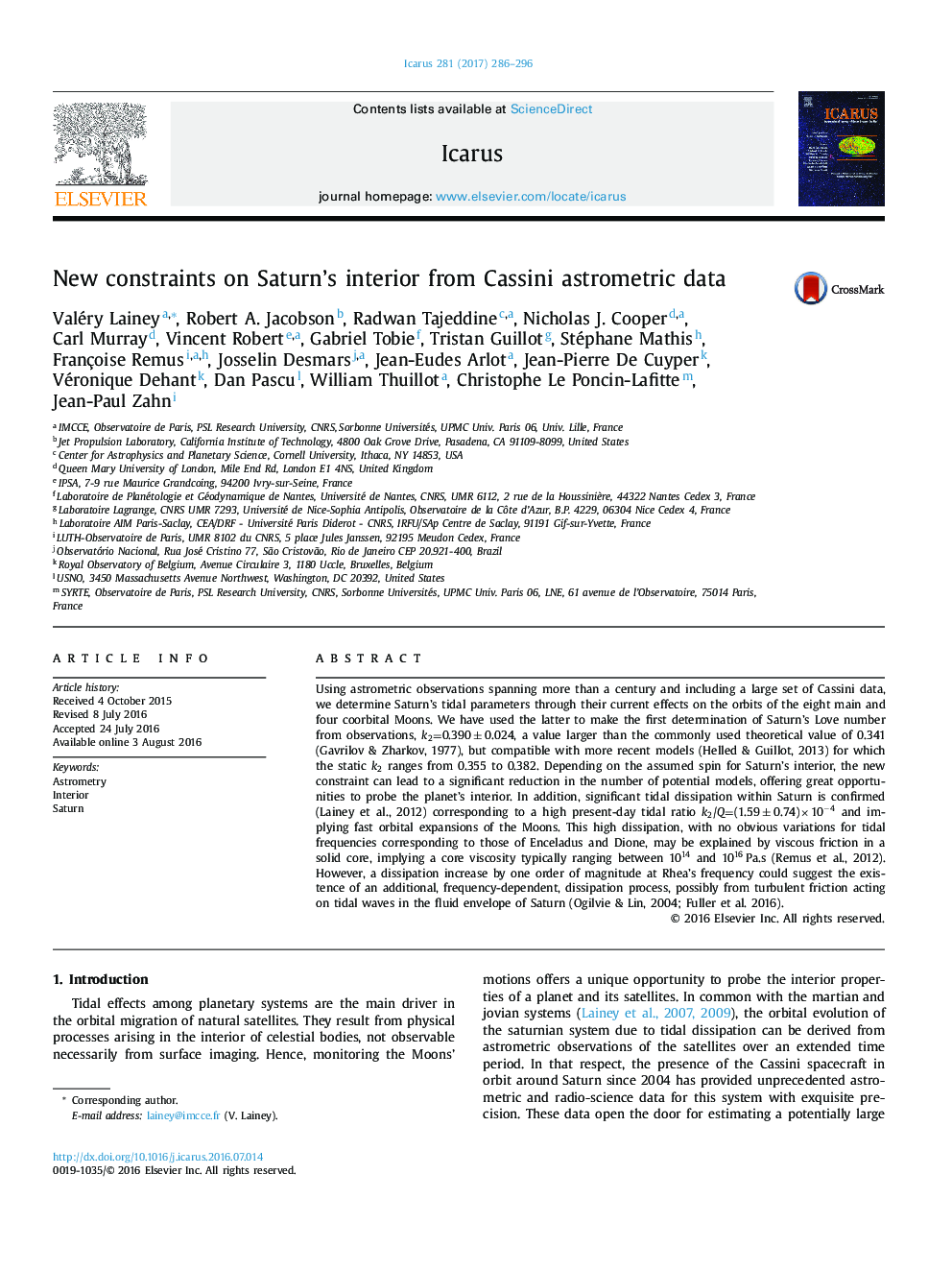| Article ID | Journal | Published Year | Pages | File Type |
|---|---|---|---|---|
| 5487320 | Icarus | 2017 | 11 Pages |
Abstract
Using astrometric observations spanning more than a century and including a large set of Cassini data, we determine Saturn's tidal parameters through their current effects on the orbits of the eight main and four coorbital Moons. We have used the latter to make the first determination of Saturn's Love number from observations, k2=0.390 ± 0.024, a value larger than the commonly used theoretical value of 0.341 (Gavrilov & Zharkov, 1977), but compatible with more recent models (Helled & Guillot, 2013) for which the static k2 ranges from 0.355 to 0.382. Depending on the assumed spin for Saturn's interior, the new constraint can lead to a significant reduction in the number of potential models, offering great opportunities to probe the planet's interior. In addition, significant tidal dissipation within Saturn is confirmed (Lainey et al., 2012) corresponding to a high present-day tidal ratio k2/Q=(1.59 ± 0.74) Ã 10â4 and implying fast orbital expansions of the Moons. This high dissipation, with no obvious variations for tidal frequencies corresponding to those of Enceladus and Dione, may be explained by viscous friction in a solid core, implying a core viscosity typically ranging between 1014 and 1016 Pa.s (Remus et al., 2012). However, a dissipation increase by one order of magnitude at Rhea's frequency could suggest the existence of an additional, frequency-dependent, dissipation process, possibly from turbulent friction acting on tidal waves in the fluid envelope of Saturn (Ogilvie & Lin, 2004; Fuller et al. 2016).
Keywords
Related Topics
Physical Sciences and Engineering
Earth and Planetary Sciences
Space and Planetary Science
Authors
Valéry Lainey, Robert A. Jacobson, Radwan Tajeddine, Nicholas J. Cooper, Carl Murray, Vincent Robert, Gabriel Tobie, Tristan Guillot, Stéphane Mathis, Françoise Remus, Josselin Desmars, Jean-Eudes Arlot, Jean-Pierre De Cuyper, Véronique Dehant,
